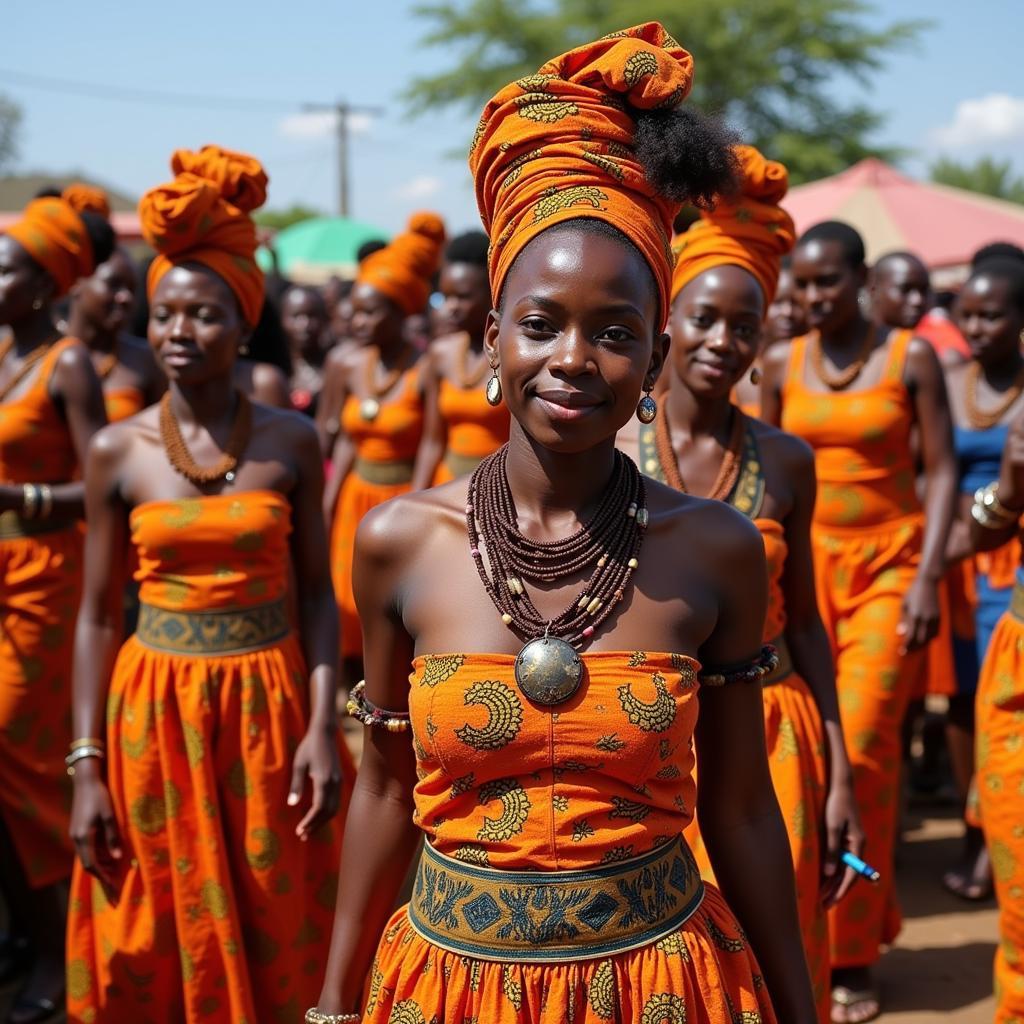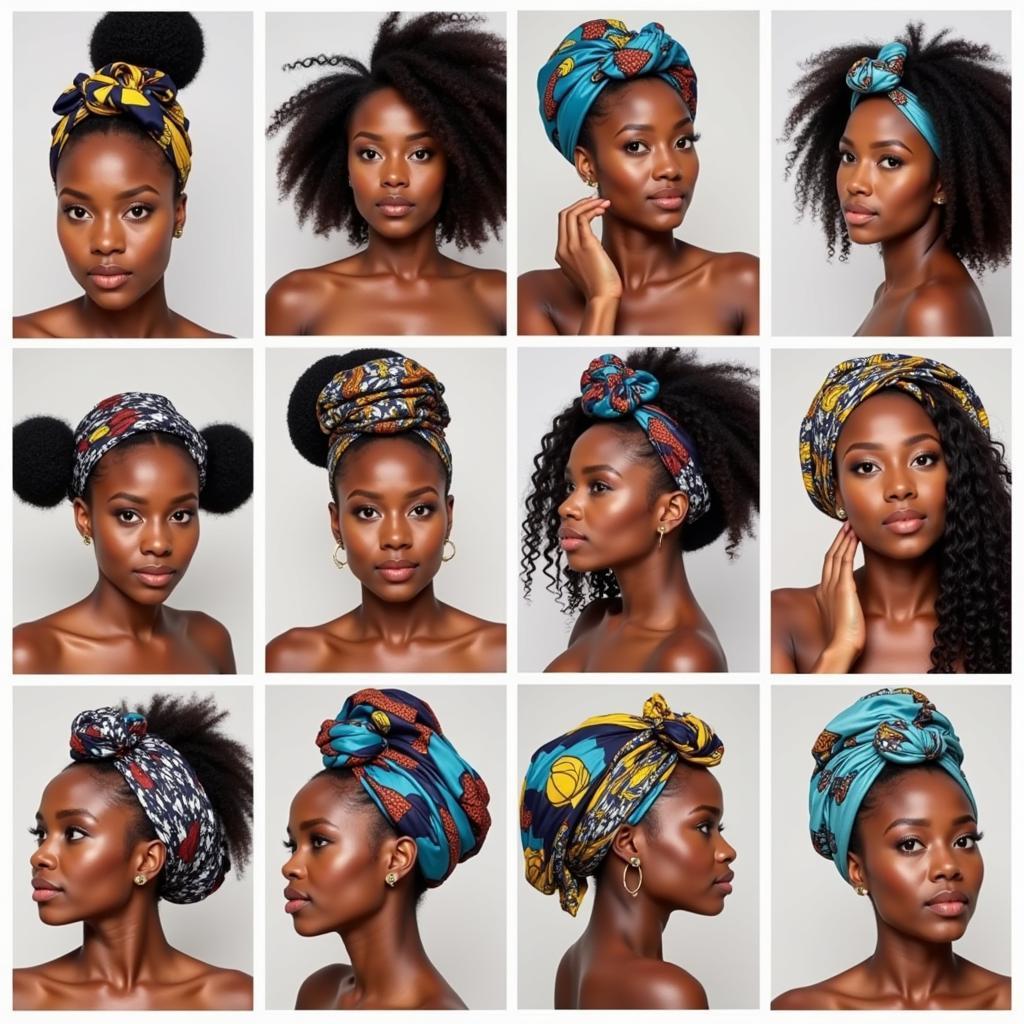Traditional African Head Wraps, also known as head ties, turbans, or dhuku in various African languages, are more than just an accessory. They are a powerful symbol of cultural identity, a celebration of heritage, and a stunning expression of personal style. For centuries, these vibrant fabrics have adorned the heads of African men and women, embodying tradition, spirituality, and social standing.
The Significance of Head Wraps in African Culture
In many African societies, the way a head wrap is tied can communicate a woman’s marital status, age, social standing, or even her profession. For instance, a head wrap tilted at a certain angle might indicate a woman is married, while a particular color or pattern could signify her role within the community.
 African women attending a ceremony with head wraps
African women attending a ceremony with head wraps
Beyond their social significance, head wraps also hold deep spiritual meaning. They are often seen as a crown, representing regality, strength, and wisdom. In some cultures, the act of covering one’s head is a sign of respect for ancestors and deities.
A Tapestry of Styles and Techniques
The beauty of African head wraps lies in their versatility. From the gele of Nigeria to the doek of South Africa, each region boasts its unique styles and techniques. Some wraps are tied close to the head, while others are voluminous and elaborate, requiring considerable skill and creativity.
 Different styles of tying African head wraps
Different styles of tying African head wraps
The fabrics used for head wraps are just as diverse as the styles themselves. From brightly colored Ankara prints to luxurious silks and handwoven textiles, the choice of fabric often reflects the occasion and the wearer’s personal taste.
Traditional African Head Wraps in the Modern World
Today, traditional African head wraps continue to be an important part of African culture, seamlessly blending tradition with contemporary fashion. They have transcended geographical boundaries and have become a global fashion statement, embraced for their beauty, versatility, and cultural significance.